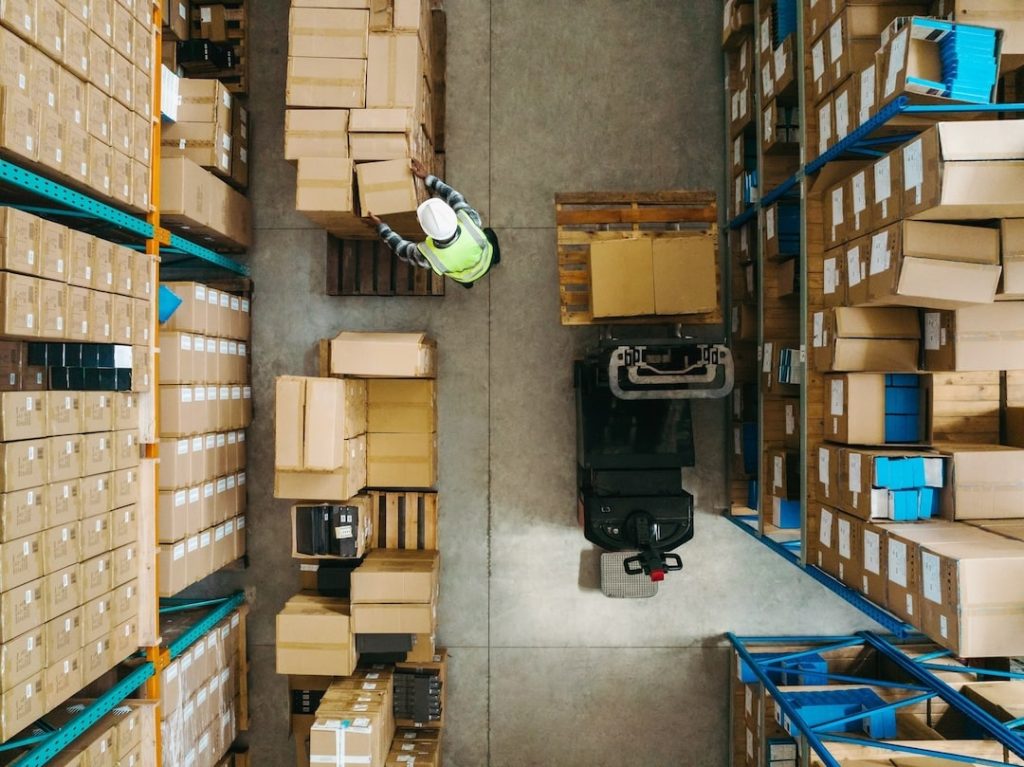Warehouse logistics sits at the center of modern supply chains. Every step, from how inventory is stored to how orders are fulfilled, has a direct impact on cost, speed, and customer satisfaction. With supply chains becoming more complex and customer expectations higher than ever, businesses need strong warehouse strategies to stay competitive.
At R2 Logistics, we’ve seen how companies struggle with rising shipping rates, human error, and unexpected delays. The good news: with the right practices and technology in place, those challenges can be turned into opportunities for growth and resilience.
Why Warehouse Logistics Matters in Today’s Supply Chain
Warehousing plays a pivotal role in connecting supply with customer demand. When processes break down inside the four walls of a warehouse, the ripple effects are immediate: late shipments, inflated costs, and dissatisfied customers.
E-commerce growth and same-day delivery expectations have raised the bar even higher. Companies that refine their warehouse practices gain the ability to adapt quickly, maintain accuracy, and protect margins in an increasingly competitive landscape.
Inventory Management Best Practices
Effective inventory management ensures that the right product is available at the right time, without overstocking. Instead of relying on outdated manual counts, leading companies use demand forecasting, automated reorder points, and real-time tracking systems. This reduces costly errors while ensuring customers aren’t left waiting for backordered products.
At R2 Logistics, we help businesses integrate Transportation Management Systems (TMS) that connect directly with warehouse data. This real-time visibility not only improves accuracy but also allows leaders to make proactive decisions when demand spikes or supply chain disruptions occur.
Technology and Automation in Warehousing
Technology has reshaped warehouse operations from the ground up. Warehouse Management Systems (WMS) and TMS platforms provide visibility into every stage of order fulfillment, while automation tools, like robotics, RFID, and barcode scanning, reduce human error and keep operations moving quickly.
Perhaps the greatest benefit of these tools is the data they provide. Real-time insights help managers anticipate bottlenecks, measure productivity, and scale operations without guesswork.
Layout and Process Optimization
A well-organized warehouse layout directly improves speed and safety.
- Optimize slotting and picking paths to reduce wasted motion.
- Adopt cross-docking to speed up shipments without unnecessary storage.
- Apply lean warehousing principles to eliminate inefficiencies.
These small process improvements add up to faster turnaround times and lower operational costs.
Labor Management and Training
No warehouse strategy succeeds without skilled people. Employees need the right training, clear safety guidelines, and opportunities to improve. Well-prepared staff not only reduce errors but also maintain higher levels of productivity and morale.
Organizations that treat workforce development as an ongoing investment see stronger results. When employees are supported with training and safety resources, turnover declines and output improves.
Compliance and Risk Management
Regulatory compliance is a daily priority for warehouses. OSHA standards, FDA requirements for specific goods, and customs compliance all demand careful attention. Noncompliance can result in steep fines, reputational damage, and even shutdowns.
Risk management is equally critical. From labor shortages to natural disasters, disruptions are inevitable. Having contingency plans and insurance coverage in place ensures the supply chain can continue moving despite unexpected challenges.
Sustainability and Green Warehousing
Sustainability initiatives are reshaping how warehouses operate. Energy-efficient systems, sustainable packaging, and smarter shipping practices not only reduce environmental impact but also improve operational efficiency.
Customers and partners increasingly expect businesses to align with environmental responsibility. Companies that embed sustainability into their logistics strategies strengthen their brand reputation while controlling costs.
Partnering with a 3PL for Warehouse Success
Running a warehouse efficiently often requires resources and expertise that go beyond what many companies can maintain in-house. Third-party logistics providers (3PLs) fill this gap by offering flexible capacity, technology solutions, and experienced personnel.
At R2 Logistics, our clients gain access to real-time visibility, reliable carrier networks, and scalable solutions that remove the common pain points of cost overruns and delivery delays. With the right partner, warehousing becomes a competitive advantage instead of a constant challenge.
Key Considerations for Improving Warehouse Logistics
Continuous improvement starts with asking tough questions about current processes. Do you have real-time visibility into inventory and shipments? Are existing workflows built to scale as demand changes? How well are compliance and safety being measured and enforced?
Another key consideration is whether outsourcing part of the operation could unlock efficiencies that aren’t possible internally. These evaluations often highlight opportunities to strengthen warehouse performance and support long-term supply chain resilience.
Building a Resilient Supply Chain
Warehouse logistics is the foundation of a resilient supply chain. By focusing on accuracy, automation, compliance, sustainability, and workforce development, businesses can create warehouse operations that drive efficiency and customer satisfaction.
R2 Logistics is committed to helping companies achieve these goals. Contact us today to learn how our 3PL services can improve your warehouse logistics and give your business the competitive edge it needs.


